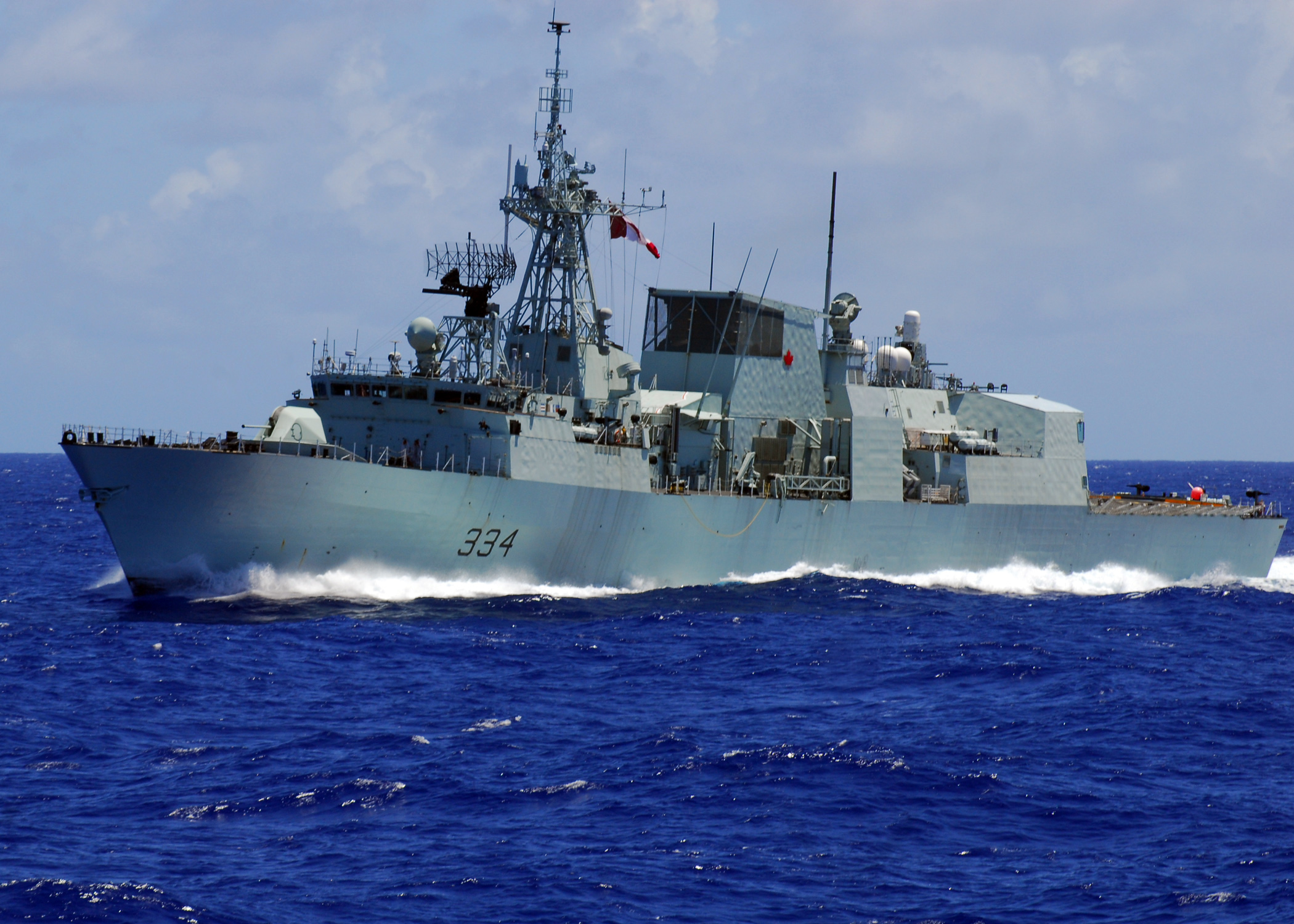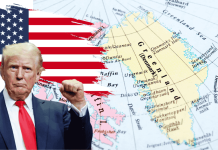In a move highlighting geopolitical tensions in the Arctic, a Canadian warship shadowed China’s most advanced polar icebreaker, the Xue Long 2 (Snow Dragon 2), as it navigated the Bering Strait between Russia and Alaska in July.
The HMCS Regina mission was part of Canada’s effort to monitor and assert sovereignty in the Arctic region. The Canadian government initially did not disclose HMCS Regina’s surveillance of the Xue Long 2 during its Arctic Ocean mission.
This detail came to light only after media inquiries about the frigate’s itinerary. According to the Canadian media, the Department of National Defense, which had described the mission as an “Arctic awareness and sovereignty mission,” did not explain why it had omitted the monitoring of the Chinese ship from its public accounts.
Open-source vessel tracking websites indicated that HMCS Regina’s surveillance of the Xue Long 2 occurred between July 13 and 17. The sites also revealed that the Canadian vessel turned off its transponder on July 13 while in the Bering Sea and reappeared four days later in Arctic waters.
Frederica Dupuis, a spokesperson for the Department of National Defense, stated that HMCS Regina and its CH-148 Cyclone helicopter “interacted safely and professionally” with the Xue Long 2 as it passed through the strait.

Dupuis clarified that there were no encounters with the Chinese four-warship task group, which remained in international waters throughout the operation.
The presence of the Chinese military flotilla was first reported by the US Coast Guard, which detected the vessels within the US exclusive economic zone, extending 200 nautical miles from Alaska, on July 6.
In response, HMCS Regina was dispatched from Canadian Forces Base Esquimalt near Victoria on July 7 for a rapid deployment. Dave Mazur, commander of the Canadian Navy’s Pacific fleet, described the deployment as “on short notice for a brief but impactful mission.”
The US Coast Guard cutter Kimball monitored the Chinese task group until it exited the Bering Strait and headed back into the Pacific Ocean south of the Aleutian Islands.
As stated in a July 10 report by the US Coast Guard, the Chinese vessels communicated their intent to conduct “freedom of navigation operations” in response to US radio communications.
Meanwhile, Vice-Admiral Angus Topshee, the commander of the Royal Canadian Navy, expressed pride in the extent to which HMCS Regina traveled north. He noted that it is “extremely rare” for a frigate to operate at such high latitudes and that this represents a record for a Halifax-class vessel north of the Bering Strait.
These developments highlight the Arctic’s growing strategic significance as nations intensify their efforts to secure influence in this pivotal region.
As climate change accelerates the warming of the Arctic, Canada is increasingly encountering foreign actors with military ambitions drawn by the area’s rich natural resources, energy potential, and key transportation routes.
Although China does not have territorial claims in the Arctic, it has labeled itself as a “near-Arctic state” to support its growing presence in the region. This approach is illustrated by the Snow Dragon 2 vessel, which serves dual purposes.
According to Dupuis, this dual-function approach is part of a broad pattern where competitor nations, including China and Russia, are actively exploring Arctic waters and the sea floor, heightening tensions in the region.
China’s Xue Long 2 is an upgraded successor to the original Xue Long vessel. While ostensibly a research vessel, it has been used to reinforce China’s presence in the Arctic, even though the country does not hold territory there.

This effort is part of a broader strategy to normalize China’s involvement in the region, which experts argue is meant to subtly assert China’s interests under the guise of scientific collaboration.
“We are seeing more Russian activity in our air approaches, and a growing number of Chinese dual-purpose research vessels and surveillance platforms collecting data about the Canadian North that is, by Chinese law, made available to China’s military,” Dupuis said.
The growing presence of Chinese and Russian military assets is also evident in recent joint operations, such as Russia and China’s deployment of bombers in international airspace off the Alaskan coast.
This joint military activity was closely monitored and intercepted by US and Canadian fighter jets, underscoring the heightened strategic competition in the Arctic.
Meanwhile, Canada demonstrated its global stance by navigating a warship through international waters in the Taiwan Strait on July 31. Defense Minister Bill Blair framed this maneuver as a reaffirmation of Canada’s commitment to a “free, open, and inclusive” Indo-Pacific.
China, however, has condemned this action, accusing Canada and its allies of threatening regional peace. Beijing views Taiwan as a renegade province and claims sovereignty over the Taiwan Strait, underscoring the broader geopolitical tensions that intersect with Arctic and Indo-Pacific strategies.
- Contact the author at ashishmichel(at)gmail.com
- Follow EurAsian Times on Google News




